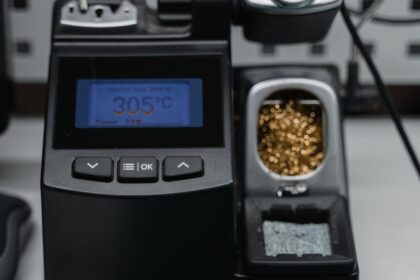The modern beauty industry often hails the latest scientific breakthroughs or trending products, but some of the most enduring beauty secrets are rooted in age-old traditions. Among these, the Asian Pinay (Filipina) beauty heritage stands out for its natural, holistic, and sustainable approach. Passed down from generations, these rituals embody more than aesthetics—they symbolize a harmonious connection between self-care, nature, and cultural wisdom.
This article delves deep into the time-honored beauty practices of Filipinas, exploring the ingredients, rituals, and philosophies that continue to inspire both local and global beauty standards.
The Cultural Roots of Filipina Beauty
To understand the depth of Asian Pinay beauty traditions, we must first appreciate the cultural context. The Philippines, an archipelago of over 7,000 islands, has a rich blend of indigenous, Spanish, American, and Asian influences. This diverse background shaped a unique standard of beauty—one that emphasizes simplicity, freshness, cleanliness, and natural grace.
In rural and urban homes alike, beauty isn’t just about vanity. It’s about hygiene, respect for one’s body, and connection to the environment. Mothers, grandmothers, and even fathers played roles in passing on these practices as part of daily routines.
1. Coconut Oil – The Liquid Gold
Perhaps the most iconic beauty staple for Pinays is virgin coconut oil (VCO). It’s used for almost everything—from skin moisturizing to hair treatment.
Uses:
-
Hair Care: Applied as a hot oil treatment or leave-in conditioner to promote shine, reduce dandruff, and prevent split ends.
-
Skin Moisturizer: Especially effective on dry elbows, knees, and feet.
-
Makeup Remover: Its gentle, natural formula breaks down makeup while nourishing the skin.
Pinays often grow up watching their elders rub coconut oil onto their hair before bedtime and wash it off in the morning, revealing lustrous locks.
2. Calamansi – The Skin Brightener
A native citrus fruit, calamansi is rich in Vitamin C and has natural bleaching properties. Used in various skin care routines, it’s particularly popular for:
-
Lightening dark underarms, elbows, and knees
-
Treating acne scars
-
Giving the skin a natural glow
However, it must be used with caution and always followed by sun protection to prevent irritation or darkening.
3. Rice Water – An Ancient Toner
Before Korean beauty made rice water trendy, Filipino women already understood its power. The leftover water from rinsed or boiled rice is full of vitamins, minerals, and amino acids that are beneficial for the skin.
Benefits:
-
Soothes sensitive skin
-
Reduces inflammation and redness
-
Acts as a natural facial toner
In traditional homes, rice water is often stored in clay pots and used to wash the face and hands, keeping the skin smooth and radiant.
4. Aloe Vera – The All-Purpose Healer
Grown in backyards or kept in pots on windowsills, aloe vera is a go-to remedy in Filipino households.
Common Uses:
-
Soothing sunburns or insect bites
-
Reducing acne and redness
-
Conditioning the hair and scalp
Fresh aloe gel is usually scooped directly from the leaf and applied to the skin or hair.
5. Banana and Honey Face Masks
Filipinas are no strangers to DIY beauty recipes. A mashed banana mixed with honey forms a hydrating face mask that nourishes and soothes the skin.
Why it works:
-
Bananas contain potassium and antioxidants
-
Honey is antibacterial and moisturizing
This traditional mask is especially popular before special events like fiestas or family gatherings.
6. Herbal Baths (Hilot and Paligo)
Paligo (herbal baths) and hilot (Filipino massage) are wellness traditions with beauty benefits.
Herbal bath ingredients often include:
-
Guava leaves (for their antibacterial properties)
-
Pandan (for its fragrant aroma)
-
Ginger (for relaxation and circulation)
Women are often introduced to these rituals after childbirth or during adolescence to cleanse the body and restore balance.
7. Turmeric and Natural Powders
Before Western makeup became accessible, Pinays used natural powders from ground rice or turmeric for coverage and skin health. Turmeric, known for its anti-inflammatory properties, was used to even skin tone and add a radiant glow.
8. Kamias and Other Botanical Remedies
Kamias (bilimbi) is a sour fruit often used for:
-
Treating pimples and oily skin
-
Removing scalp buildup when rubbed directly onto the scalp
Other botanical favorites include:
-
Gugo bark for shampooing
-
Tsaang gubat leaves for treating skin irritation
9. Emphasis on Inner Beauty and Hygiene
While these natural remedies are important, traditional Pinay beauty also emphasizes:
-
Cleanliness (malinis na katawan)
-
Modesty and simplicity
-
Healthy eating (vegetables, fish, fruits)
-
Proper sleep and hydration
These internal values reflect outwardly in glowing skin and vibrant health.
10. The Role of Community and Storytelling
What makes Asian Pinay beauty traditions even more special is the way they are shared—through stories, bonding moments, and family rituals. A mother braiding her daughter’s hair with coconut oil, a lola (grandmother) preparing an herbal bath, or cousins applying face masks together—all contribute to preserving beauty wisdom.
Modern Revival of Traditional Practices
In recent years, there’s been a resurgence of interest in natural and Filipino-made beauty products. Brands now incorporate VCO, calamansi, and rice extracts into soaps, toners, and serums. Social media influencers and celebrities proudly endorse “balik-probinsya” beauty as a clean, green, and effective approach.
With environmental consciousness rising, many are rediscovering the beauty rituals of their ancestors—not just as alternatives, but as powerful solutions that align with both modern needs and cultural pride.
Frequently Asked Questions (FAQ)
Q1: Are these traditional beauty secrets still used by modern Filipinas?
Yes. Many Filipinas incorporate traditional methods alongside modern beauty products. For instance, they may use coconut oil as a pre-shampoo treatment while also using salon brands.
Q2: Is it safe to use calamansi directly on the skin?
Caution is advised. While calamansi can brighten the skin, it is acidic and may cause irritation or darkening if exposed to sunlight afterward. Always patch test and follow with sun protection.
Q3: Can rice water be stored and reused?
Yes. You can store rice water in the refrigerator for up to 5–7 days. Always shake before use and discard if it smells sour.
Q4: How often can I use aloe vera on my face?
You can use fresh aloe vera gel daily, especially to soothe inflamed or acne-prone skin.
Q5: What is the difference between hilot and paligo?
Hilot is a traditional Filipino massage used for wellness and relaxation. Paligo is an herbal bath used for cleansing and therapeutic purposes. Both have cultural and health-related significance.
Conclusion
The beauty secrets of the Asian Pinay are more than just skincare tricks—they are a reflection of heritage, resourcefulness, and love for nature. By revisiting these timeless rituals, modern women can celebrate both outer beauty and inner wisdom. Whether you’re looking for a healthier routine or reconnecting with your roots, the traditional Filipino way offers a graceful path to self-care that never goes out of style.



